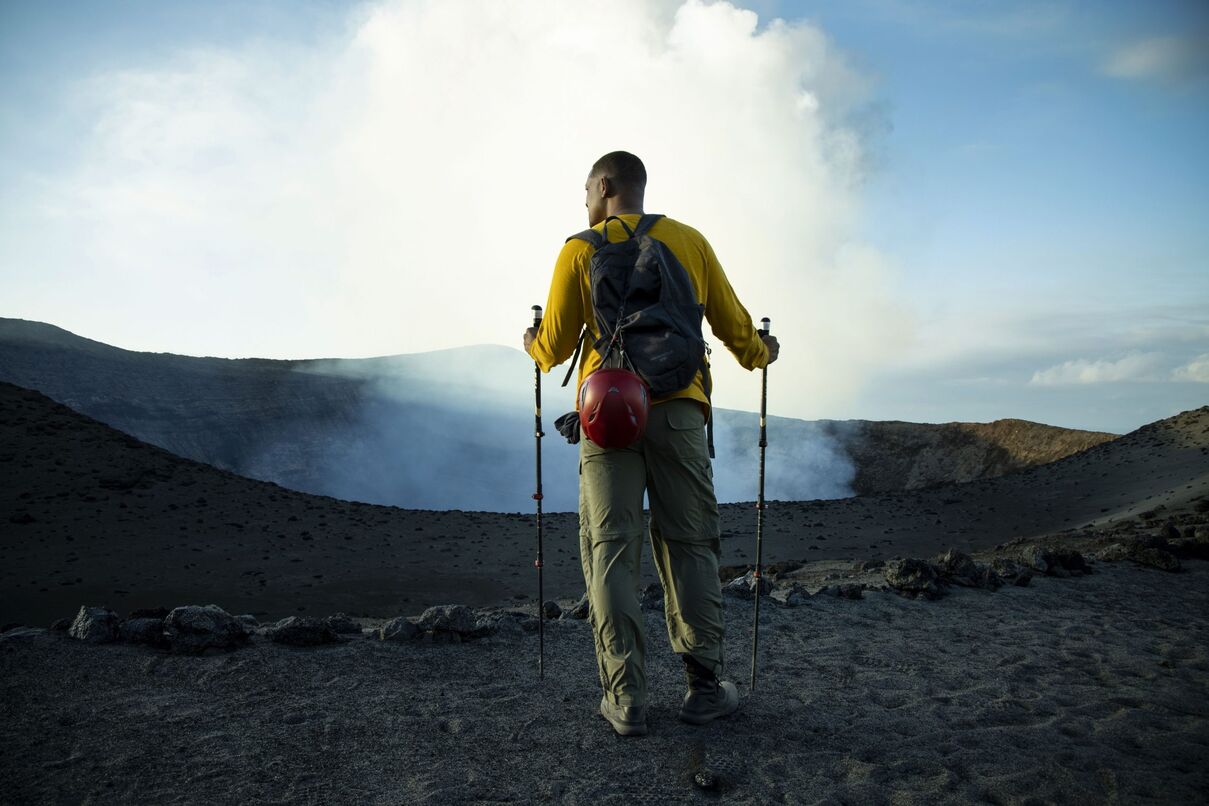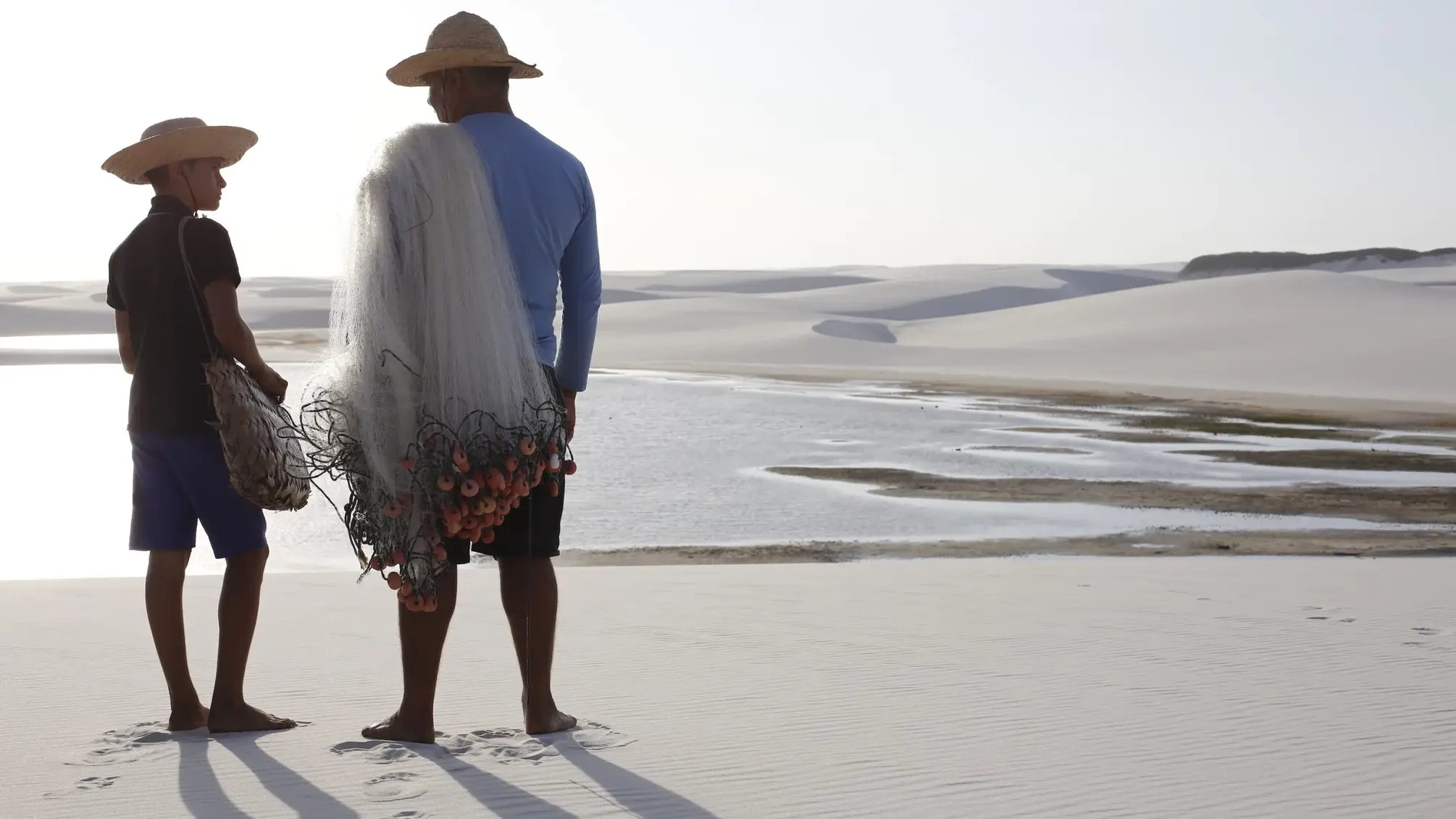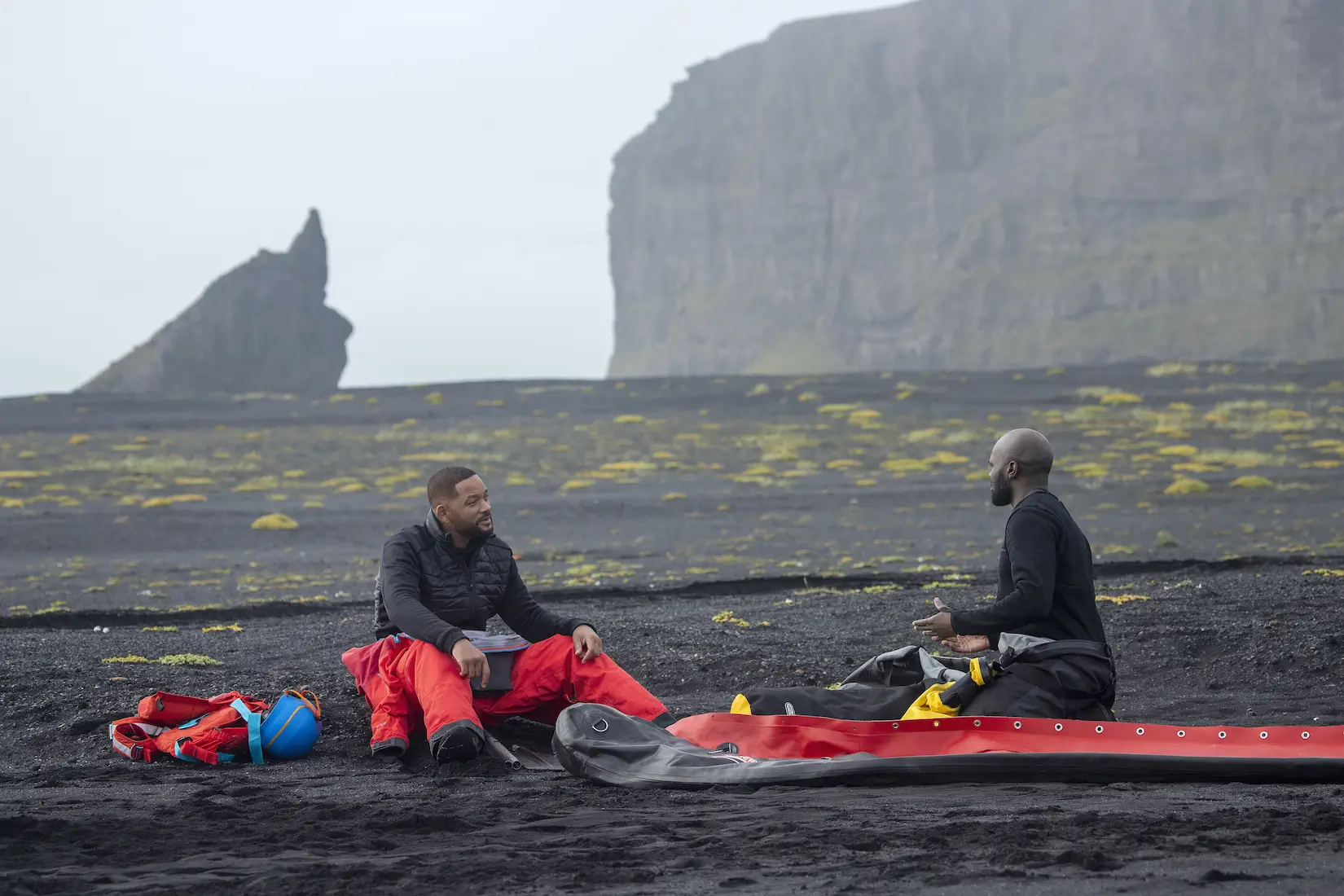Disney+ Original Series ‘Welcome to Earth’ Is An Invitation To Face Your Fears & Notice All the Clues
Like most nature documentary lovers, I was incredibly excited to see what direction National Geographic was going to take with ‘Welcome to Earth’, a show that lets us experience the thrills and spills of “Earth’s greatest wonders and reveal its most hidden secrets.” With Will Smith as our charismatic adventure guide and narrator, I knew it’d be interesting to watch a man who’s always exuded a larger-than-life persona and who’s spent decades commanding television and film sets, now explore volatile and unpredictable terrains.
Because Nature has a way of humbling you. Sure, you can plan the trip, prepare the gear and follow the maps…but Mother Nature doesn’t care about any of your plans.
Nature certainly doesn’t care how much money you make or what ideas you had in mind. She is unpredictable, vast, and (potentially) dangerous. Whatever you get is what she decides to give you.
As expected, the six-part limited series provided some good ‘ol-fashioned educational adventures full of active volcanoes, deep-sea dives, and massive caves. But what I found most interesting was how the show explored the greatest trapping of human life: Avoiding our greatest fears and jumping into the unknown.
As I watched, I was reminded that Nature reveals life’s biggest questions in a way that is so absolute and poetic. And when we can cultivate a relationship with Nature, we’re given access to some big truths and life-shifting revelations.

What we see is only one part of a vast reality
In episode one, ‘The Silent Roar’, we’re introduced to Erik Weihenmayer, an American mountaineer, as he and Smith both travel to an active volcano. With that said, Weihenmayer isn’t just any mountaineer. In 2001, he was the first blind person to have reached the summit of Mt. Everest. And in 2008, he completed the Seven Summits, expeditions which comprised the highest mountains on each of the seven continents.
Throughout the episode, Will Smith describes the various landscapes and conditions to Erik, helping him create a full experience of what’s going on around them. At least, that’s what everyone would believe. Indeed, towards the end of the episode, Erik shares that: “Sight is just a sliver of reality. And so in a way, maybe I’m helping [Will] to experience the full spectrum of living.”
In order to survive and thrive, Erik has had to rely heavily on other senses like hearing and feeling. This insight, and the experiences Will has during the episode, prove that there are sounds that we aren’t hearing, vibrations that we aren’t feeling…sights and patterns that we haven’t even attuned to.
There are possibilities and experiences that we’re not having because of narrowed perception. Because of the limits that we place ourselves.
“Sight is just a sliver of reality.” — E. Weihenmayer
As we think about achieving our goals and reaching the milestones in our lives, we must remember that our perception is only one possibility of what can exist for us. Sometimes those perceptions about ourselves and the conditions of our lives are based on the memories of our past. A past that is extinct, and that is only a sliver of this beautiful existence.
To broaden our perception so that we can reach our goals, we must devote time to things that enhance our vision. Things such as meditation, journaling, and mentorship, for example. Without new tools or influence, we cannot see new things.

We thrive when we can live in “divine cooperation” with Nature
In episode five, ‘Speed of Life’, we meet a fisherman and his son in the deserts of Brazil. Throughout the episode, we learn about the way that these two are able to find food; with the help of a special kind of fish. The armored catfish can survive on both land and water. When it shuffles its body across the desert lands in search of water, it leaves prints in the sand. The fisherman, in search of food, follow the tracks left by the catfish until they lead him to water and, therefore, food for the whole family.
In order for this symbiotic relationship to work, the fisherman cannot be gluttonous. If the nearby communities of fishermen hunted these catfish into extinction, they would lose a valuable ally and a necessary compass.
Although this episode was about finding the clues to survive, the message that I received was a lesson on relationships. A lesson of divine cooperation that shows us that there is an interdependence that keeps the catfish alive and the fisherman’s family fed. The fisherman must be strategic, self-regulated, and controlled. He understands the value of the catfish; however small and insignificant it might appear, it has value to the fisherman. These types of symbiotic relationships are overlooked in capitalism.
Our culture promotes overconsumption and exploitation. “Low-skilled” workers, livestock, vegetation, and even the trees of our forests are constantly being exploited. In some cases, to the point of extinction, causing the labor and food shortages we are experiencing today.
The fisherman has the capacity and the tools to hunt the catfish into extinction, but there is an interdependence, a divine cooperation, that keeps the fisherman and this species of catfish, thriving.

Don’t shut your eyes in the face of fear; keep your eyes open and notice all the clues
In the final episode, ‘Beyond Fear’, Smith teams up with polar explorer Dwayne Fields to find out what it takes to be a true explorer. The most amazing feat is when the two go whitewater rafting. When Smith notices a small whirlpool, Fields points out that it means there’s a small collection of rocks just beneath the surface. He proceeds to explain that certain patterns in the water give clues as to what’s currently happening and therefore, how to best paddle your way through. Fields adds that he’s never rafted that river, but he’s definitely rafted many others before this excursion with Smith. So, he knows.
As the wild expedition continues, we observe Smith gaining such sixth sense. He gains more confidence and is now able to see the clues that Fields was mentioning before. And just like that, a novice turns into a capable student in just one journey as an explorer.
This point perfectly illustrates that every time we dive into fear and uncertainty, we gather information. And although you may have never rafted a particular river, well, you certainly have rafted before, which makes it possible for you to safely navigate new terrains.
“That’s not to say the terrains of life can’t surprise you or cause you harm. It’s to say that we can create a keen, almost sixth sense, about the things on our path that will make the journey a little less scary. A little less impossible.”
Fields began his life as an explorer after a near-death experience. Someone aimed a gun at his face and shot twice. The gun jammed. Twice. He walked away with no physical harm and after that, dedicated himself to living life on purpose. He was so near death, so near uncertainty…it is the courage he had back then that helps him navigate new unpredictable and uncertain territory as an explorer today.
Fear, sometimes, makes us shut our eyes. We dream and almost immediately, we doubt. We see a steep mountain and turn back around. We find someone that brings us closer to love, then put our guards up because love is too often a synonym for suffering. Sometimes, we make self-preservation so severe, it becomes imprisonment. But have you asked yourself: “What is it that I fear exactly?”
Will Smith once said that “Fear is not real. It is a product of our imagination, causing us to fear things that do not at present and may not ever exist. That is near insanity. […] Danger is very real, but fear is a choice.”
Today, I’m inviting you to keep your eyes open in the face of fear and uncertainty. Now ask yourself: What clues do I see? What if I discover that the terrain I’ve been avoiding for so long actually ain’t all that impossible? What if I survive? What if I thrive?
Welcome to Earth is currently streaming on Disney +.
Want more stories like this? Check out the related reads below, sign up for our newsletter, and follow us on Instagram @workthemagicwithin. Have an inspirational story to share? Email us at savannah@workthemagicwithin.com.
Featured image by National Geographic; illustration by Savannah Taider





![On February 22, exactly a year after she hosted her first day-to-night retreat, ‘The ARK’, the Grammy-nominated singer-songwriter, Jhené Aiko Efuru Chilombo, launched her highly anticipated product-based spiritual brand, ‘The ALLEL’, offering happy customers a large variety of sound bowls as well as a jewelry line.
Two things about the songstress @jheneaiko : one, she is the physical representation of sound healing therapy, and two, she masters the art of speaking in codes. A Living Light, Eternal Love. This is what the letters in ‘ALLEL’ stand for. Back in March 2022, for the first time, the W.A.Y.S. singer officially introduced her product-based spiritual brand ‘The ALLEL’ in an Instagram feed post. The picture shows a dark symbol on a white background. The symbol represents two fishes intertwined together, which we easily assume derives from the zodiac sign Pisces, honoring Aiko’s very own Sun and Moon sign. “[It] represents balance, protection, and divine guidance,” she writes.
Although Instagram feed posts dedicated to ‘The ALLEL’ products were rare before the launch of the brand (and its dedicated Instagram page), Jhené Aiko has always been open to sharing glimpses of the project she was working on via her stories. Several times before and throughout the months that followed said introduction post, she revealed many pictures and videos of gorgeous crystal sound bowls, and of herself wearing an ‘ALLEL’ necklace, hinting that an exciting launch was on the horizon.
Click the 🔗 in bio to read more ✨
To purchase your ALLEL Sound Bowl, visit gotoheal.com and follow @allelbyjheneaiko to stay in touch with The ALLEL.
Mentioned in this article: @crystalcadencela](https://workthemagicwithin8e702.zapwp.com/q:l/r:0/wp:1/w:1/u:https://workthemagicwithin.com/wp-content/plugins/instagram-feed/img/placeholder.png)
Nature is like our oldest and greatest teacher. I do think it increases our spirituality and influences our growth. I’m obsessed with and inspired by landscapes and water, which is why I feel quite stagnant in a way, because of my current environment. But I sometimes improvise with sounds (meditations) since I don’t have access to the sights. I want to check this series out, too. Great read, Michae!